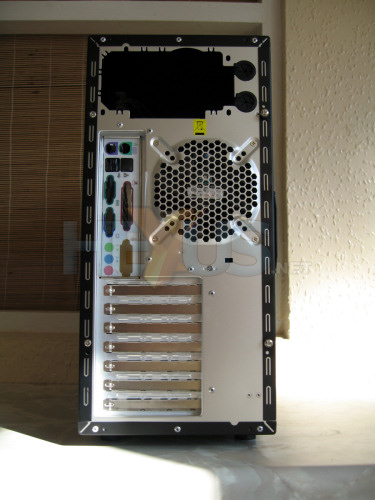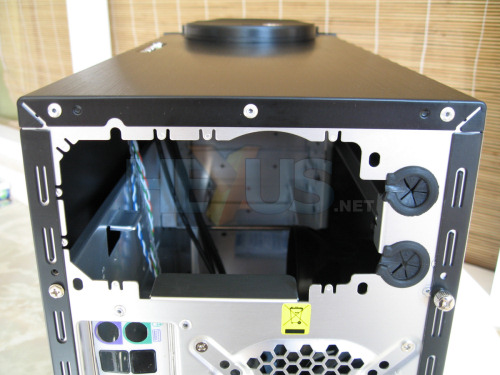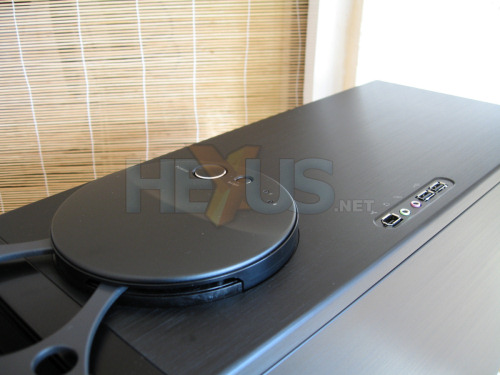External Appearance - Continued
Round the back of the system is the common ATX layout, with a totally fixed back plate. There's neither a removable motherboard trays here nor anything special in the power-supply area. There are, however, a few special features here worth mentioning.The first of which is the rear case fan. Now whilst the Cooler Master Mystique ships with one 120mm fan in the front and a rear 120mm fan as standard, the chassis has mountings for 80-, 90- or 120mm fans, so, really, the choice is yours if you don’t like the very capable included offerings.
The second feature of note is the water-cooling preparation that Cooler Master has implemented on the Mystique, comprising of two simple holes cut out next to the PSU mountings that allow you to route your water-cooling setup through the top of the chassis rather than utilising a PCI plate.
Cooler Master has thought more about this than most, we feel. The holes for the water-cooling pipes are actually open-sided – meaning you can insert and remove the pipes from the system without needing to drain the setup and remove connectors first. That can be a real pain when using a PCI plate, so good stuff from Cooler Master here.
At the top of the chassis is the main working part of the doors, with both hinges going under a cover where the power, reset and activity lights are placed. Further back on the right-hand side we find the usual external ports, for FireWire, USB and audio, respectively. The leads for the Azalia-capable (Intel High-Definition Audio) audio are not an ideal location and with devices plugged in it's very easy to catch the wires with the doors.
On the right-hand side of the chassis there is nothing special to note. The panel is fixed to the chassis using standard screws, unlike the thumbscrews to be found on the main working side.
One thing to note about the Cooler Master Mystique is its weight, or lack thereof. Tipping the scales at only 6.3kg, it really is very light, and (yet structurally) very solid.
Remember we spoke about the doors earlier? Well let’s go take a closer look.












